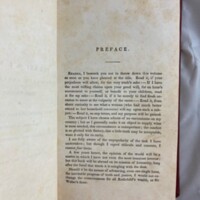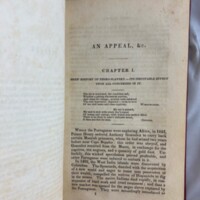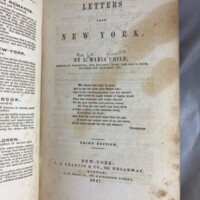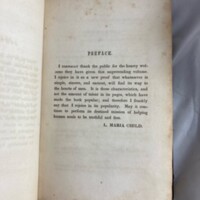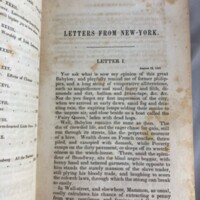Leaders and Heroes 2: The Arts
Lydia Maria Child (1802-1880)
Lydia Maria Child was a prominent abolitionist, women’s right’s activist, and advocate for Native American rights. Even before her activism, she had long been a woman of letters, earning a small but respectable income as a novelist and editor. In the 1830s, she and her husband David Lee Child (1794-1874) joined the abolitionist cause, resulting in her most famous work, An Appeal in Favor of that Class of Americans Called Africans, published in 1833 and included in this exhibit. From 1841 until 1843, she was the editor of the National Anti-Slavery Standard, making her the first woman to edit a national political paper.
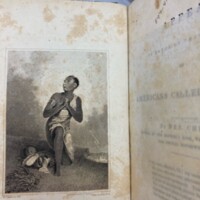
Lydia Maria Child, of An Appeal in Favor of that Class of Americans called Africans, frontispiece.
Boston: Allen and Ticknor, 1833
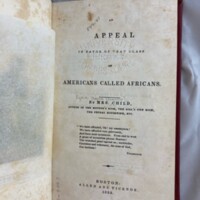
Lydia Maria Child, of An Appeal in Favor of that Class of Americans called Africans, title page.
Boston: Allen and Ticknor, 1833
As with Sappho, there are several works by Child in Special Collections but we have restricted ourselves to just two. The first of these is our copy of An Appeal in Favor of that Class of Americans called Africans (1833), the first book-length abolitionist work to be published. Its examination of slavery emphasized the racism and exploitation inherent in the practice, especially how it related to Black women, to help foster support for abolitionism. Prior to the Appeal, Child had mainly been known as a writer of historical novels and the founder of the popular Juvenile Miscellany, a children’s magazine that ran from 1826 until 1836. The publication of the Appeal, however, marked a change in her career. Ignoring the backlash, she became a vehement campaigner for Black rights, writing and editing newspapers, as well as editing and publishing slavery narratives.
Child wrote Letters from New York while she was living in New York City as editor of the National Anti-Slavery Standard. Child wrote the letters as a series of weekly columns addressed to a (fictional) correspondent outside the city. The letters discuss a variety of topics, ranging from impressions of New York City to questions like women’s suffrage or racism. Intermingled with all of the letters is a commentary on the spiritual implications of what is being described, whether it be the metropolis as a whole or subcultures within it. Compared to the other articles in the National Anti-Slavery Standard, they were quiet and introspective rather than overtly activist, but this was by design: among her goals as editor was to broaden the readership of the newspaper. The letters were later published in two collected volumes and quickly became some of her most popular works. This was the third edition.
